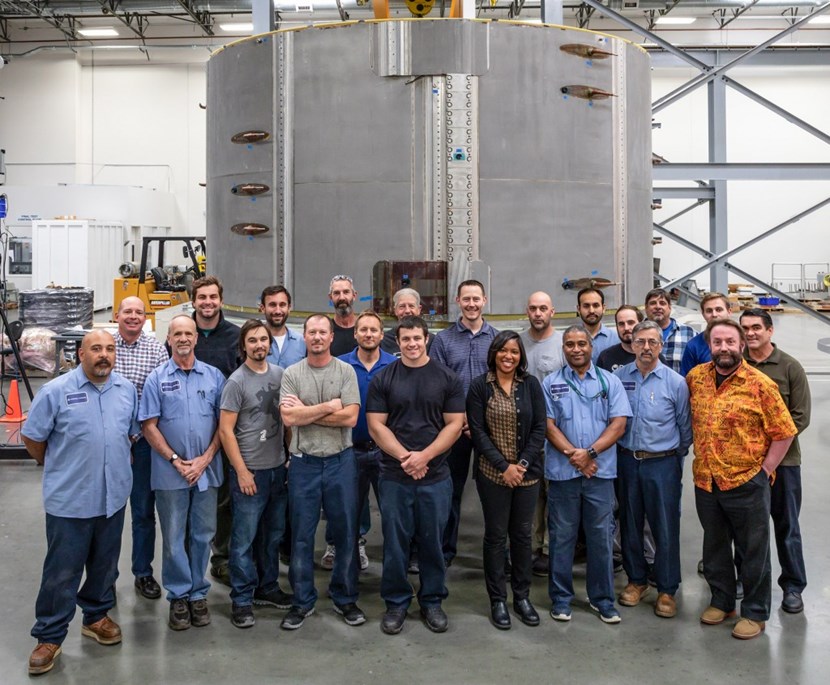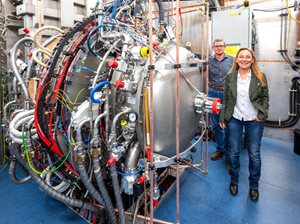ITER NEWSLINE
-
Central solenoid
Module #1 nears completion
US ITER
Central solenoid | Module #1 nears completion
US ITER and contractor General Atomics recently achieved a major milestone in the fabrication of the ITER central solenoid, completing vacuum pressure impregnation (VPI) on the first production module. The VPI process is the penultimate step of fabrication that turns almost 6 km of carefully wound superconducting conductor into a structurally strong, electrically insulated electromagnet.

The module fabrication team at the General Atomics Magnet Technology Center in Poway, California. Six stacked modules will form the 1,000-tonne central solenoid magnet. Photo: GA
"Completion of VPI is a critical step in the process and the team worked diligently and with great care to insure its success," said John Smith, project manager for General Atomics. "The first production unit now looks like a central solenoid module, and it won't be too much longer before it is complete and begins to function as one."
The central solenoid, often called the "heart of ITER," is essential for operation, serving to initiate plasma and generate the necessary current for plasma heating and sustainment. Six modules will be stacked to form the 1,000-tonne central solenoid, which will be the largest pulsed superconducting magnet in the world when it is complete. General Atomics is under contract to US ITER to fabricate the six modules plus one spare.
During vacuum pressure impregnation, the team evacuates a rigid mold encasing the coil and injects a three-part epoxy mixture to impregnate the insulation materials wrapped around each conductor turn, plus the ground insulation around the module itself. The epoxy provides both electrical insulation and structural support to the module. In a final fabrication step, piping is added and the assembly undergoes final testing.
Fabrication of the modules began in 2016 at the General Atomics Magnet Technologies Center in Poway, California. The manufacturing process takes approximately 22-24 months per module plus an additional 5-6 months of testing. Five modules are currently in various stages of production.
General Atomics has been a pioneer in fusion research and development for over 50 years and is also home to the DIII-D National Fusion Facility, funded by the Department of Energy through the Office of Fusion Energy Sciences.
return to the latest published articles







